Recently, Prof. Dong Nianguo of Union Hospital of Tongji Medical College, Huazhong University of Science and Technology (Wuhan Union Medical College Hospital), in collaboration with Prof. Shang Xiaoke, Prof. Zhong Yucheng, and Prof. Chen Shu, and other team members, applied the SAPIEN 3 valve to a patient with massive regurgitation in the valve orifice after mitral valvuloplasty, and diffusely diminished motion in the left ventricular wall after CABG+PCI, and successfully accomplished a difficult case of TMVR. The patient's symptoms were significantly improved.
Case Profile
The patient is a male, 70 years old.
The main complaint:Chest tightness after activity, panic attacks, shortness of breath for three months.
As seen on cardiac ultrasound:1. The ascending aorta was not wide, the aortic valve was slightly thicker and more echogenic, and the leaflet activity was acceptable.2. The whole heart was enlarged, and the left ventricular end-systolic internal diameter was 5.2 cm, the transverse diameter was about 6.1 cm, and the longitudinal diameter was about 8.9 cm. The left ventricular wall did not have any obvious echoes of the appendaged wall mass.3. Strong echoes of the shaping annulus were seen in the mitral annulus, and the leaflets could be opened but closed poorly, with the diameter of the annulus of the leaflet being about 2.3 cm; the tricuspid valve had the morphology and openness of the valve but closed poorly. The interventricular septum is not thick and moves in a reverse direction to the posterior wall of the left ventricle; the left ventricular wall movement is diffusely attenuated, and the systolic thickening rate is reduced. The LVEF value measured by biplane Simpson's method was 49%. Right ventricular wall motion was fair, TAPSE=1.6cm, RVFAC=56%.5. The atrial and ventricular septum did not show any obvious continuous interruption.6. CDFI:A large amount of regurgitant signal was seen on the left atrial side of the mitral orifice during systole; a small amount of regurgitant signal was seen on the right atrial side of the tricuspid orifice during systole.
Examination findings/diagnosis:Substantial regurgitation of the valve orifice after mitral valvuloplasty; diffuse attenuation of left ventricular wall motion after CABG+PCI; enlarged whole heart with reduced left ventricular systolic function measurements Mild tricuspid valve closure insufficiency.

Preliminary Diagnosis:
Surgical Strategies
Surgical precedure
Right femoral vein puncture, ultrasound-guided septal puncture, and septal dilatation using a 14-mm balloon;
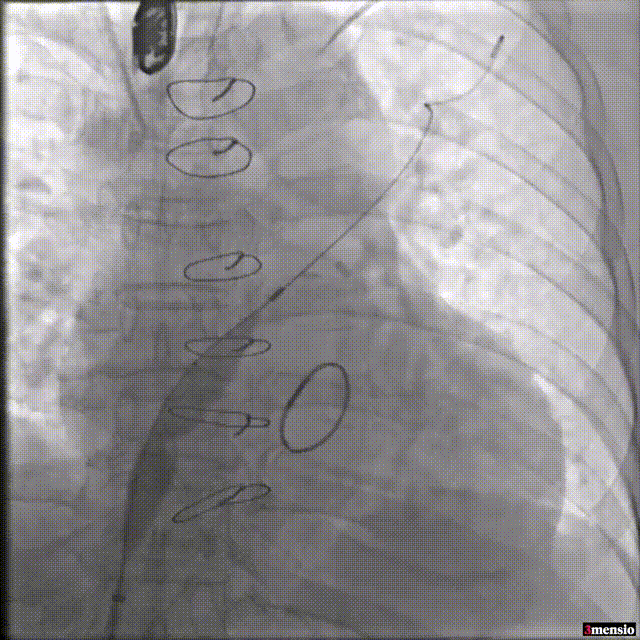
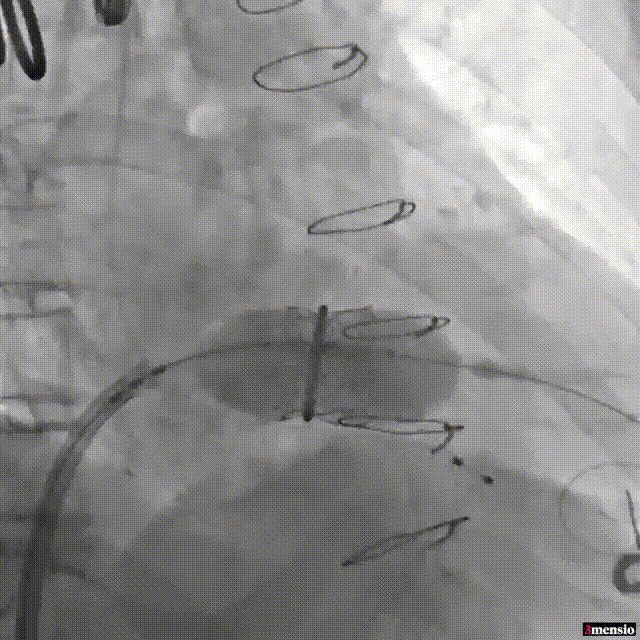
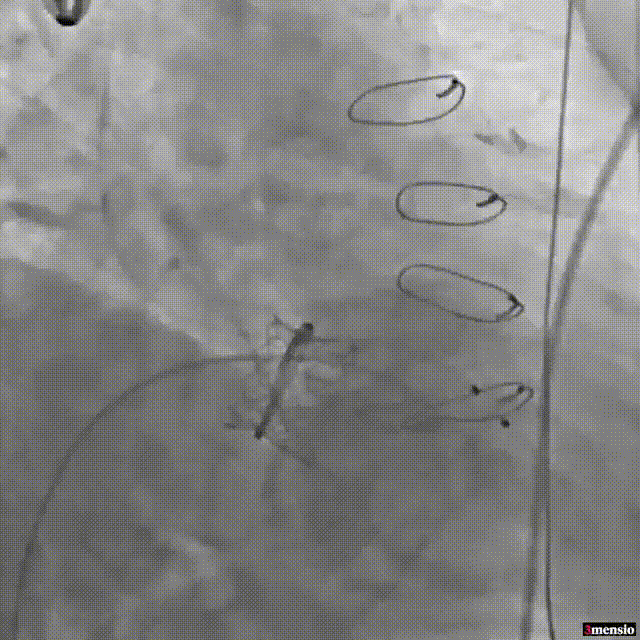
Postoperative ultrasound measurement of transvalvular pressure difference was 6 mmHg without perivalvular leakage.
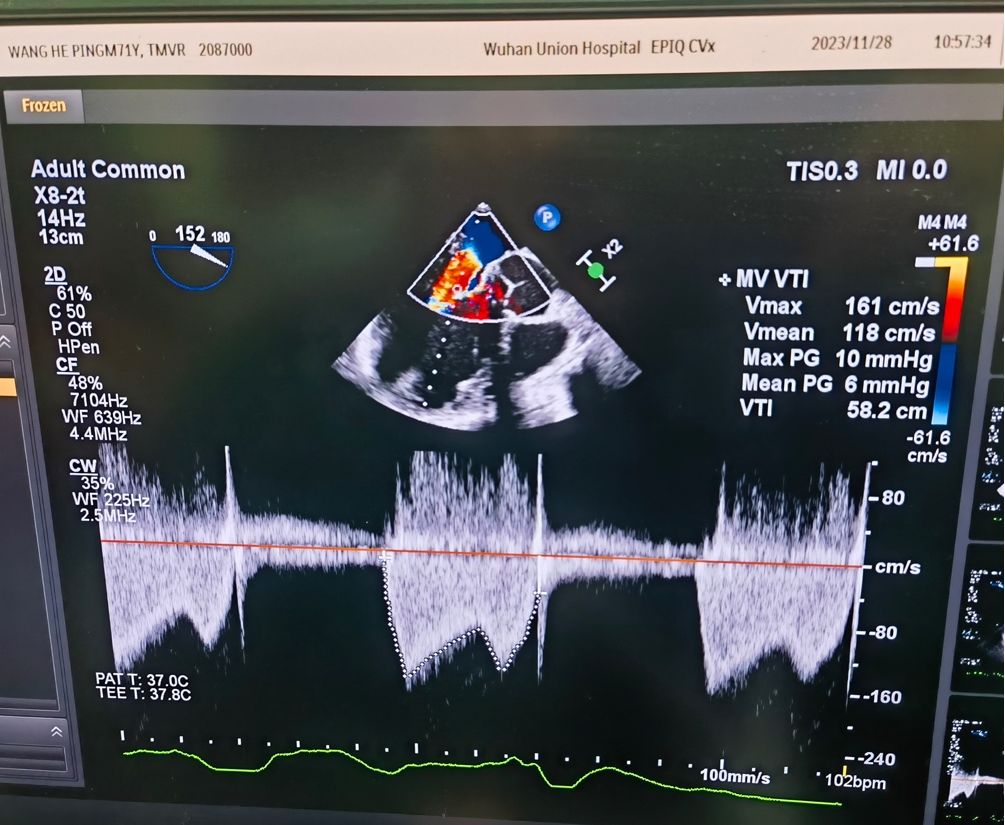
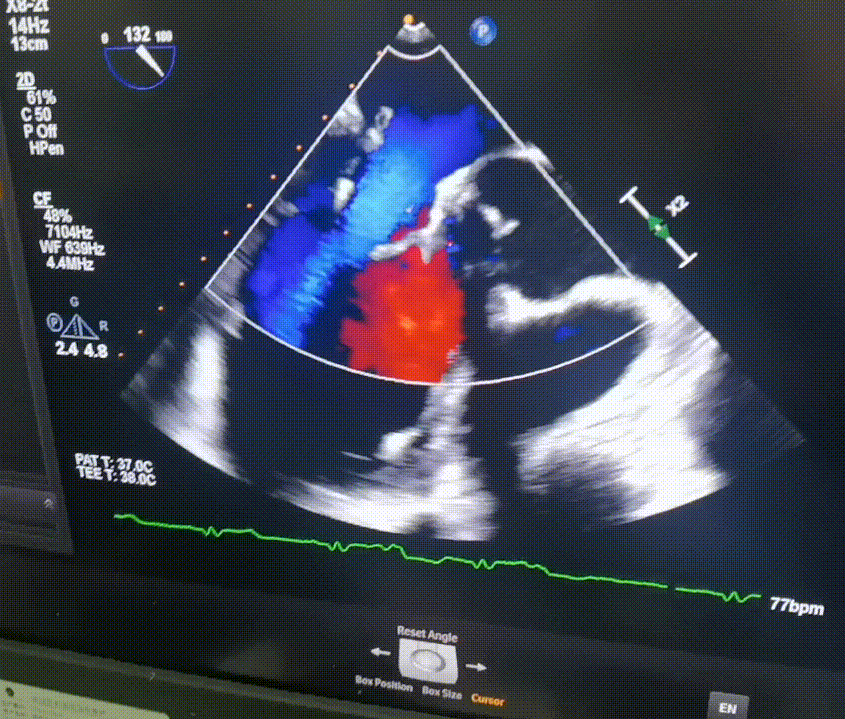
Post-operative summary
After mitral valvuloplasty and CABG+PCI, the patient presented with massive mitral regurgitation and diffusely diminished left ventricular wall motion, with markedly reduced cardiac contractile function. Mitral regurgitation is a common heart valve disease that increases the chance of death in patients. Medication can only slow down the progression of the disease and improve the clinical symptoms, but does not address the root cause of the problem. For patients of advanced age, second surgery and poor cardiac function, surgical treatment is more risky, so Prof. Dong Nanguo's team decided to use an interventional approach.
For mitral valve replacement, the team faced a number of challenges that required individualization of mitral annulus size, geometry, and anchoring points. To meet these challenges, the team chose the SAPIEN 3 valve, whose excellent support and feedback delivery system allowed for a stable, precise and coaxial release, guaranteeing a strong anchoring of the prosthesis.
The application of transcatheter mitral valve replacement has brought new solutions for patients who cannot undergo mitral valve surgery, valve failure after mitral valve surgical replacement and MR after mitral annuloplasty. In the future, the minimally invasive intervention team of Wuhan Union Medical College Hospital for Heart Valve Disease will continue to work hard to explore new treatments and technologies to provide better medical services for patients.


